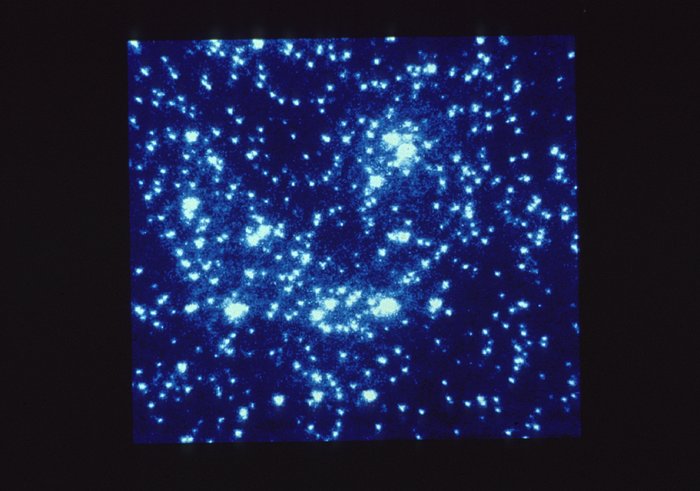47 Tucanae core
The core of the globular cluster 47 Tucanae, as imaged by the European Space Agency's Faint Object Camera (FOC) onboard NASA/ESA Hubble Space Telescope. Space Telescope's high spatial resolution and ultraviolet sensitivity make it a powerful tool for probing the centers of globular clusters. The FOC resolves several hundred stars where ground-based images only yield a few dozen stars. At least 21 of these stars are exceptionally bright in ultraviolet light. HST's UV sensitivity and high resolution allow it to easily separate these so-called blue stragglers stars from the red giant stars which dominate the cluster.
Blue stragglers may evolve from "old age" back to a hotter and brighter youth through stellar collisions and mergers. This high concentration of blue stragglers towards the core of 47 Tucanae suggests they are significantly more massive than most of the cluster's stars. Some of blue stragglers could be massive because they are really double star systems. Such binary systems may influence the motions of thousands of other stars within the cluster.
Credit:About the Image
About the Object
| Name: | 47 Tucanae, NGC 104 |
| Type: | Milky Way : Star : Grouping : Cluster : Globular |
| Distance: | 15000 light years |
| Category: | Star Clusters |
Colours & filters
| Band | Wavelength | Telescope |
|---|---|---|
| Ultraviolet Mid-UV | 220 nm |
Hubble Space Telescope
FOC |
